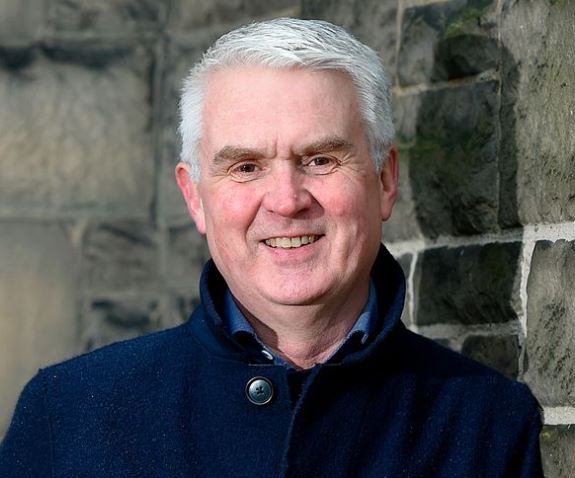 Sixteen years ago, just a few years shy of middle age, I came to Edinburgh to make a new life. Summer was just beginning but it was a cold coming. An inauspicious arrival. All bets were off.
Sixteen years ago, just a few years shy of middle age, I came to Edinburgh to make a new life. Summer was just beginning but it was a cold coming. An inauspicious arrival. All bets were off.
I came to begin a new chapter in the very place where, scarcely six months earlier, I had tried to end my life. Perversely to my nearest and dearest, I sought sanctuary where I had previously sought oblivion.
When I came to this place, I left a lot behind. I’d lived in the big smoke for 21 years. I had a home, a livelihood, and, even more importantly, an extensive network of friends.
My stock of social and economic capital was pretty good. Firmly on the right side of fortunate. Privileged even. But my emotional capital was rock bottom. It was a tension I’d grown up with but this time it had been taut to breaking point.
My friends were good people. They scratched their heads about what on earth I was doing uprooting myself — and leaving them behind.
I had tested their patience to the limits. I had not given them a second thought when I’d swallowed the pills. Mental illness does that. And yet still they cared.
But I was careworn. I had to leave the emotional noise of my old life behind.
To begin with, I was almost a hermit here. I tramped the streets and joined them up to make sense of the city. I ran to the top of the surrounding hills to get perspective. I found a church I could pray in to make peace.
Slowly but surely I made a home here. I met the man who is now my husband. I forged new friendships and salvaged old ones. I built a new livelihood, and a reputation in a different country.
Rebuilding was a trudge, not a revelation. But I did it. I came to terms with mental illness. With being someone who had spent time in psychiatric institutions.
Yet no matter how hard I tried, there was one mark I couldn’t erase. I had attempted to end my life — to ‘commit’ suicide.
When I became chair of SAMH, Scotland’s leading mental health charity, in 2015, I decided to write about my breakdown — and suicide attempt — for the first time.
I had become accustomed to being someone who was open about depression, albeit by wearing a cloak of recovery, which somehow made it more respectable. That was then, this is now. I’m fine — in a not bad sort of way.
In truth, it was a story I told myself and others which didn’t quite stack up. I liked to think I wore it lightly. At times I even made light of it, as if to prove a point. But from time to time the heaviness of my mood could hoover a room.
Recovery doesn’t magic a depressive personality away. It keeps it in abeyance. Some, even most, of the time. But not all of the time.
Writing about my own mental infirmity wasn’t something I relished. But I did it out of a sense of obligation, to explain my motivation. I thought it might be cathartic too. But I was wrong.
As my piece did the rounds on social media, I longed for the exposure to end. At first, I couldn’t understand why. Surely it was okay not to be okay, or at least not to have been okay in a previous, now shuttered down, part of life?
Then, gradually, the reason for my discomfort fell into place. It was the suicide bit. The harry carry stuff.
The wasted call on over-stretched resources. The betrayal of friends and family. The thoughtless self-indulgence of it all.
And, most shameful of all, I hadn’t even succeeded. Because it might somehow have been more respectable if I had. The shame of not trying hard enough, to be dead.
But this week I’ve decided to give the story a second outing — because it’s Suicide Prevention Week.
And what I’ve learnt these past few years is that the stigma which surrounds suicide takes the stigma of mental illness to another level. For me at least, though I know I’m not alone.
And it’s that stigma which colludes with silence to make suicide taboo. A place we’re afraid and unwilling to go. But, devastatingly, the suicide rate in Scotland rose dramatically in 2018 to 784 people from 680 in 2017. So go we must.
It happens in plain sight and in places we don’t want to look. Off bridges. In front of trains. In nooses. At the bottom of a bottle of booze, or a packet of pills, or the end of a needle.
It happens to people we know. And people we don’t. To someone’s father and mother, sister and brother, son and daughter. To our friends. To young and middle-aged men and people in our most deprived communities especially. And time and time again it happens to people in prisons.
It is, by its very nature, the loneliest thing in the world. It happens in isolation and yet as each new death announces itself, it feels somehow contagious. A way out of life that’s got hold of our psyche, preying on those most vulnerable among us.
Scotland’s 10 point Suicide Prevention Action Plan, Every Life Matters, is replete with all the right stuff — training, awareness, support, innovation and evidence. We need to know more — much more — about what’s happening in our midst.
But we already know that many — even the majority — of those who die by suicide are known to services. We know that our responses to crisis and distress are inadequate. And we know that people presenting in distress to emergency services too often receive a stigmatising response.
I remember that response. The audible exasperation. The silent disapproval. The infantilising admonishment. The shame clings to me still.
So yes, we have a plan. Yes, we must resource it properly. But if we can’t tackle the stigma, our efforts will be continue to be in vain. It isn’t always good to talk. It’s hard. It’s painful. It hurts.
But talk about suicide we must. It will save lives.
If you need to talk, you can contact the Samaritans, day and night
You can find out more about getting help in an emergency and how to ask about suicide from SAMH here and here
